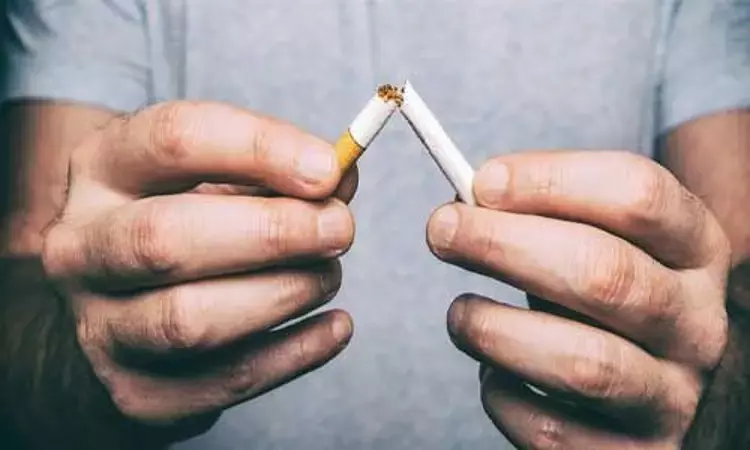- Home
- Medical news & Guidelines
- Anesthesiology
- Cardiology and CTVS
- Critical Care
- Dentistry
- Dermatology
- Diabetes and Endocrinology
- ENT
- Gastroenterology
- Medicine
- Nephrology
- Neurology
- Obstretics-Gynaecology
- Oncology
- Ophthalmology
- Orthopaedics
- Pediatrics-Neonatology
- Psychiatry
- Pulmonology
- Radiology
- Surgery
- Urology
- Laboratory Medicine
- Diet
- Nursing
- Paramedical
- Physiotherapy
- Health news
- Fact Check
- Bone Health Fact Check
- Brain Health Fact Check
- Cancer Related Fact Check
- Child Care Fact Check
- Dental and oral health fact check
- Diabetes and metabolic health fact check
- Diet and Nutrition Fact Check
- Eye and ENT Care Fact Check
- Fitness fact check
- Gut health fact check
- Heart health fact check
- Kidney health fact check
- Medical education fact check
- Men's health fact check
- Respiratory fact check
- Skin and hair care fact check
- Vaccine and Immunization fact check
- Women's health fact check
- AYUSH
- State News
- Andaman and Nicobar Islands
- Andhra Pradesh
- Arunachal Pradesh
- Assam
- Bihar
- Chandigarh
- Chattisgarh
- Dadra and Nagar Haveli
- Daman and Diu
- Delhi
- Goa
- Gujarat
- Haryana
- Himachal Pradesh
- Jammu & Kashmir
- Jharkhand
- Karnataka
- Kerala
- Ladakh
- Lakshadweep
- Madhya Pradesh
- Maharashtra
- Manipur
- Meghalaya
- Mizoram
- Nagaland
- Odisha
- Puducherry
- Punjab
- Rajasthan
- Sikkim
- Tamil Nadu
- Telangana
- Tripura
- Uttar Pradesh
- Uttrakhand
- West Bengal
- Medical Education
- Industry
Exposure to Passive Smoking in child and adult lives may lead to NAFLD in midlife: Study

Nonalcoholic fatty liver disease is the one of the most common cause of chronic liver disease. Thus identification of risk factors early in life is important for its prevention
Exposure to passive smoking during childhood and later appears to be associated with an increased risk for fatty liver in adulthood. Therefore prevention of exposure to passive cigarette smoking should begin as early as possible
The study has been published in the American Journal of Gastroenterology.
This study was conducted by Feitong Wu and team with the objective to look at the link between passive smoking in infancy and adulthood and fatty liver in middle age.
A total of 1,315 people took part in this 31-year prospective cohort research. Childhood passive smoking (parental smoking) data was gathered in 1980 (aged 3–18 years) and 1983, while adulthood passive smoking data was collected in 2001, 2007, and 2011. In 2011, ultrasonography was used to detect fatty liver in people aged 34–49.
Fatty liver was found in 16.3% of people. After controlling for relevant confounders such as age, gender, childhood socioeconomic position, and adulthood physical activity and alcohol use, both childhood and adulthood passive smoking were linked with an increased risk of fatty liver. Individuals who had consistent passive smoking exposure between childhood and adulthood had the highest risk compared to those who had no passive smoking exposure in either childhood or adulthood.
There were several limitations in the study, firstly fatty liver during childhood was not measured. Additionally, per study protocol, fatty liver was diagnosed via ultrasound imaging; liver biopsy is considered the standard method for measuring fatty liver.
Passive smoking in both child and adult lives are associated with increased risk of adult fatty liver, suggesting that the prevention of passive smoking should start as early as possible and maintain throughout lifetime.
In conclusion, with the known effect of passive smoking it is suggested that passive smoking avoidance should begin as early as feasible and continue throughout one's life. "These findings suggest that effective strategies for preventing passive smoking in both child and adult life may substantially reduce adult risk of fatty liver," concluded the authors.
Reference:
F, Pahkala K, Juonala M, et al. Childhood and adulthood passive smoking and nonalcoholic fatty liver in midlife: a 31-year cohort study. Am J Gastroenterol. 2021;116(6):1256–1263.
doi: 10.14309/ajg.0000000000001141
Medical Dialogues consists of a team of passionate medical/scientific writers, led by doctors and healthcare researchers. Our team efforts to bring you updated and timely news about the important happenings of the medical and healthcare sector. Our editorial team can be reached at editorial@medicaldialogues.in.
Dr Kamal Kant Kohli-MBBS, DTCD- a chest specialist with more than 30 years of practice and a flair for writing clinical articles, Dr Kamal Kant Kohli joined Medical Dialogues as a Chief Editor of Medical News. Besides writing articles, as an editor, he proofreads and verifies all the medical content published on Medical Dialogues including those coming from journals, studies,medical conferences,guidelines etc. Email: drkohli@medicaldialogues.in. Contact no. 011-43720751


